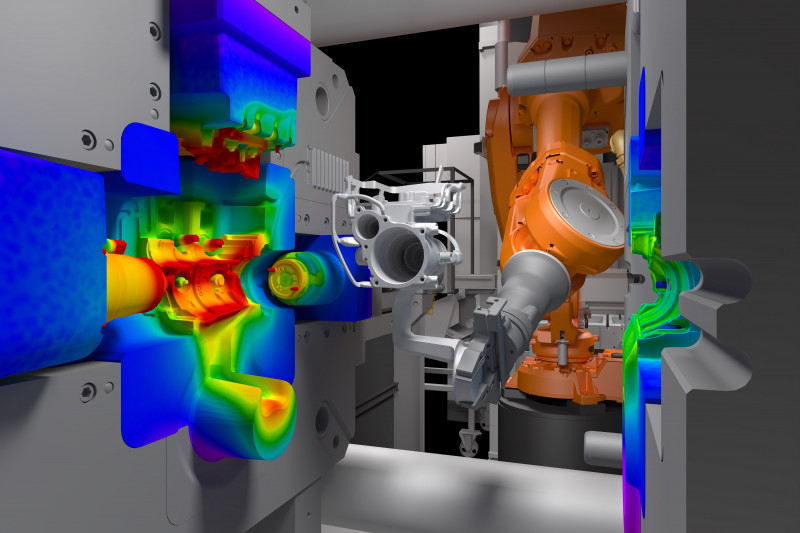Introduction:
Aerospace manufacturing is a highly complex and challenging industry that demands the utmost precision and quality in every component used. One crucial aspect of aerospace manufacturing is casting, which plays a vital role in the production of advanced aerospace parts and structures. This article delves into the significance of aerospace casting, highlighting its importance in achieving high-performance aircraft and spacecraft systems.
1. Understanding Aerospace Casting:
Aerospace casting is a manufacturing process that involves pouring molten metal or alloy into a mold to create complex and intricate shapes required for aerospace components. This casting technique allows for the production of parts that cannot be easily machined or formed using other manufacturing processes. The resulting castings exhibit exceptional strength, reliability, and dimensional accuracy, making them indispensable in the aerospace industry.
2. Types of Aerospace Casting:
There are several types of casting processes employed in aerospace manufacturing, each suited for different requirements and specifications. Some commonly used casting techniques are:
2.1 Investment Casting:
Investment casting, also known as lost-wax casting, is a widely used casting method in aerospace manufacturing. It involves creating a wax pattern of the desired part, which is then coated with ceramic and heated to melt the wax, leaving behind a hollow ceramic mold. Molten metal is poured into the mold, and once cooled, the ceramic shell is broken away, revealing the finished casting. Investment casting allows for the production of intricate and complex parts with exceptional accuracy.
2.2 Sand Casting:
Sand casting is a cost-effective casting process that involves creating a mold using sand mixed with a binder. The mold is then compacted around a pattern of the desired part, and molten metal is poured into the cavity. Once solidified, the sand mold is broken away, leaving behind the casting. Though not as accurate as investment casting, sand casting is suitable for producing larger aerospace components with simpler designs.
2.3 Die Casting:
Die casting is a high-pressure casting process that involves injecting molten metal into a mold cavity under high pressure. The mold, known as a die, is typically made of steel and can be reused multiple times. Die casting enables the production of complex parts with high dimensional accuracy and surface finish. It is widely used in the aerospace industry for manufacturing components such as engine casings and gearbox housings.
3. Advantages of Aerospace Casting:
Aerospace casting offers numerous advantages that make it an essential process in advanced aerospace manufacturing:
3.1 Design Freedom:
Casting allows for the creation of complex shapes and intricate designs that cannot be easily achieved through other manufacturing processes. This design freedom enables engineers to optimize the performance and functionality of aerospace components, leading to more efficient and advanced aircraft and spacecraft systems.
3.2 Material Selection:
Casting provides the flexibility to use a wide range of materials, including high-strength alloys, superalloys, and lightweight composites. This versatility allows manufacturers to select materials that offer the desired properties, such as strength, heat resistance, or weight reduction, leading to the development of high-performance aerospace parts.
3.3 Cost Efficiency:
Casting is a cost-effective manufacturing process, particularly for producing large and complex components. It minimizes material wastage, requires fewer machining operations, and enables batch production, resulting in reduced production costs and shorter lead times.
3.4 Structural Integrity:
Aerospace castings exhibit excellent structural integrity, with high resistance to fatigue and impact loads. The absence of joints or welds eliminates potential weak points, ensuring the reliability and longevity of aerospace components.
4. Quality Control in Aerospace Casting:
Maintaining stringent quality control measures is of utmost importance in aerospace casting. To ensure the highest quality standards, the following practices are implemented:
4.1 Non-Destructive Testing:
Non-destructive testing techniques, such as X-ray and ultrasound inspection, are employed to detect any internal defects or irregularities in castings without damaging the component.

4.2 Computerized Simulation:
Advanced computer simulations are conducted to predict the solidification behavior of the molten metal during casting, ensuring proper filling and solidification of the mold cavity.
4.3 Material Certification:
Aerospace castings require material certifications to ensure compliance with specific industry standards and regulations. Certifications provide traceability and guarantee the quality and integrity of the castings.
Conclusion:
Aerospace casting is a pivotal process in advanced aerospace manufacturing, enabling the production of high-performance components with exceptional strength, reliability, and dimensional accuracy. The versatility, cost efficiency, and design freedom offered by casting techniques make them indispensable in the aerospace industry. With continued advancements in casting technology and quality control measures, aerospace manufacturers can continue pushing the boundaries of aerospace engineering, leading to safer, more efficient, and technologically advanced aircraft and spacecraft systems.
-

- Parti e componenti pressofusi in lega di magnesio per e-bike
-

- Telaio OEM in lega di magnesio pressofuso ad alta pressione per bicicletta
-

- Parti e componenti per bici in lega di magnesio per bici da spinta per bambini
-

- Pressofusione in lega di mangensio Tixostampaggio di parti metalliche
-

- Prodotti di fonderia personalizzati parti pressofuse di alta precisione per telaio integrato e-bike
-

- Staffe metalliche Thixomolding pressofuse in lega di mangensio

 0086-750-5616188
0086-750-5616188 +86 13392089688
+86 13392089688 sales@zhongmei-tech.com
sales@zhongmei-tech.com







